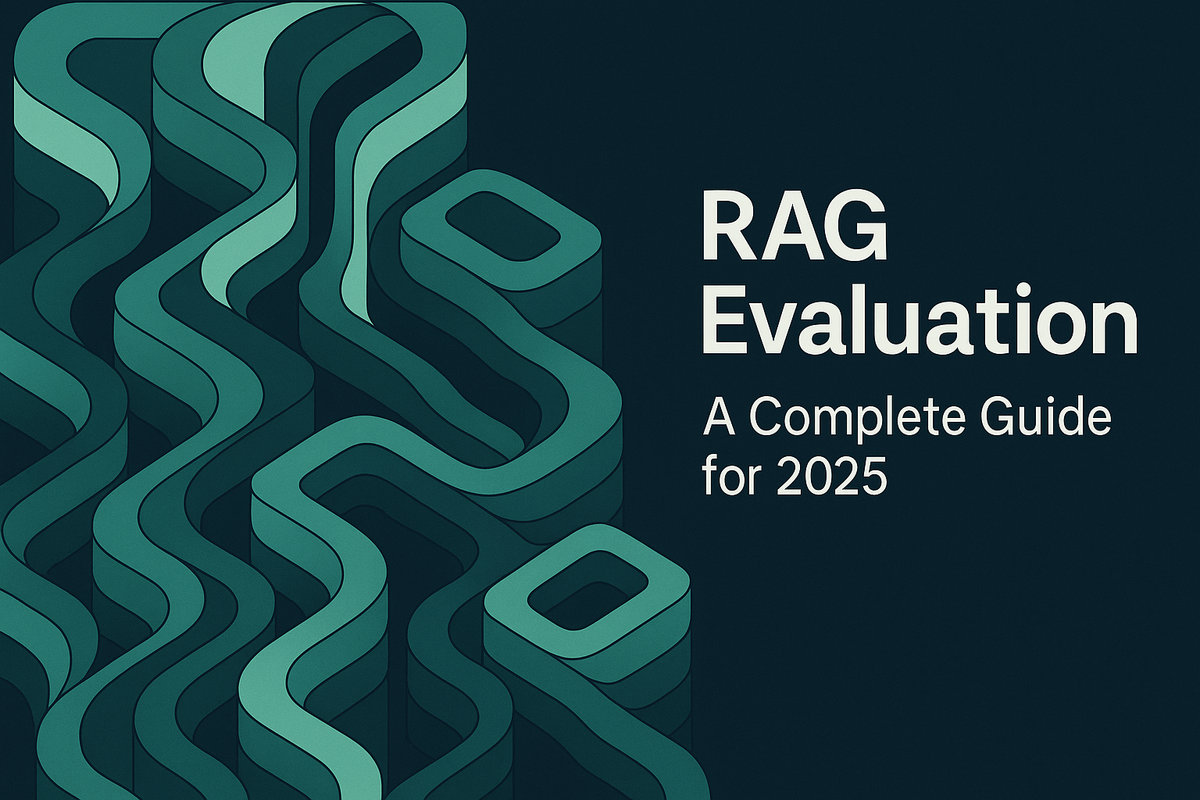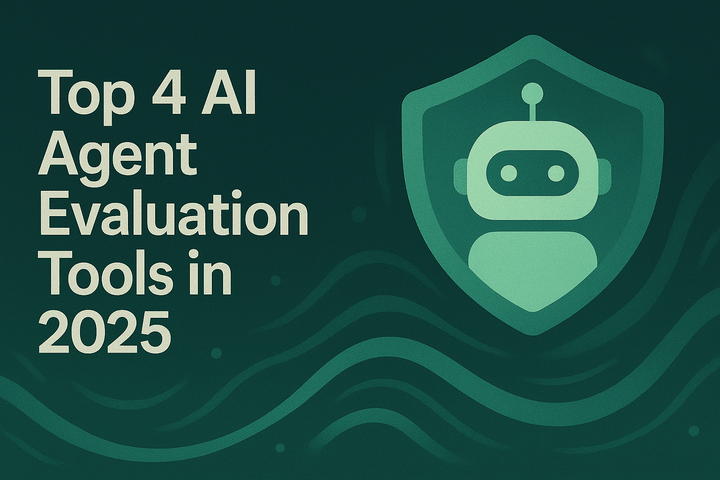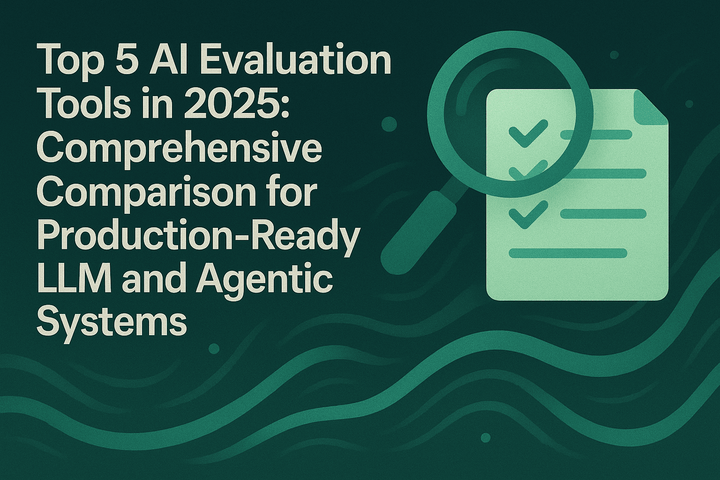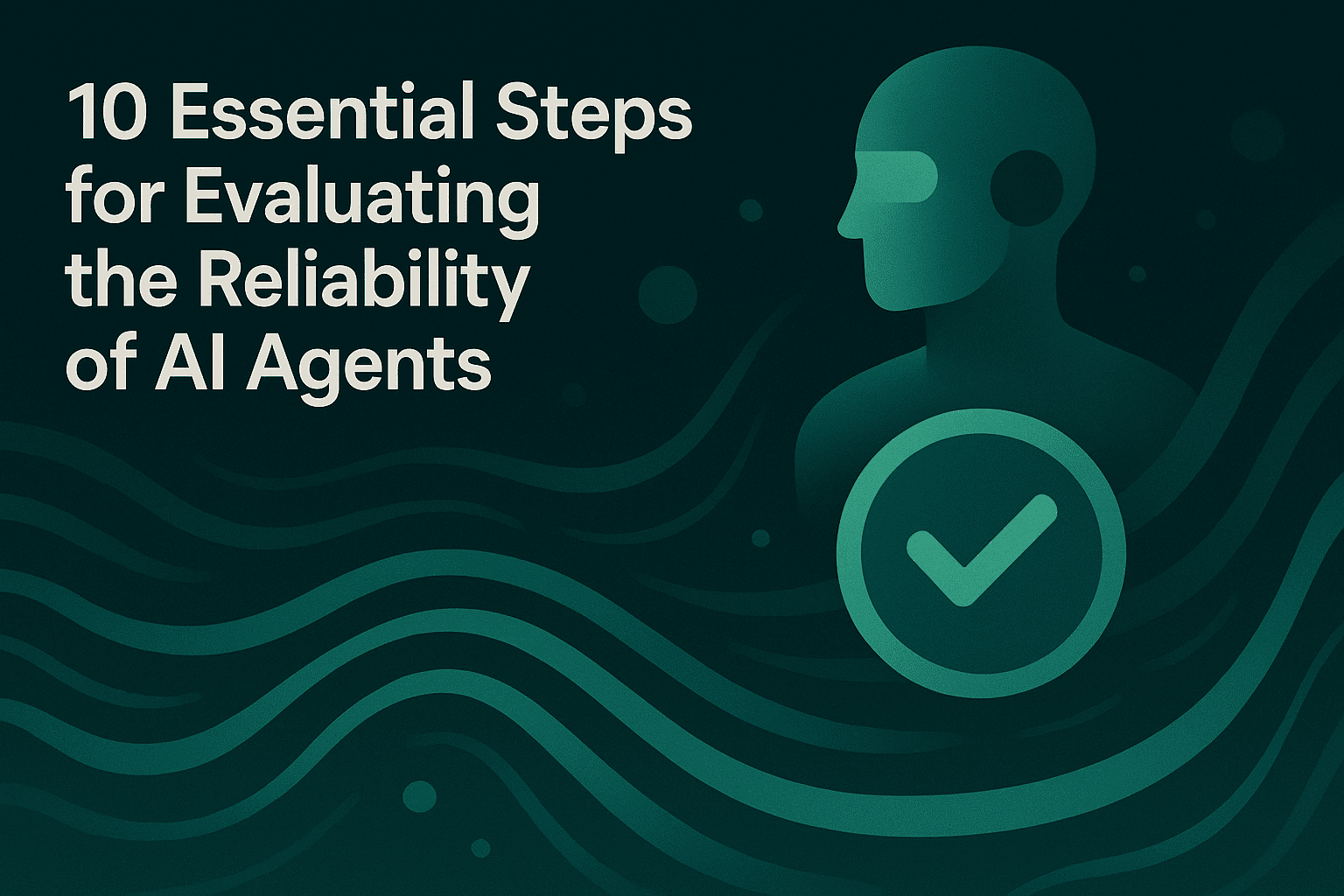RAG Evaluation: A Complete Guide for 2025

TL;DR
- RAG systems combine retrieval and generation; evaluation must assess both components.
- Retrieval quality hinges on recall, precision, relevance, and timeliness of sources.
- Generation quality requires grounding, faithfulness, clarity, and low hallucination rates.
- Judge reliability improves with mixed methods: LLM-as-a-judge, programmatic checks, and human review.
- Use Maxim’s offline evals, node-level evals, log auto-eval, and alerts for end-to-end coverage.
- Build datasets from production logs and run CI/CD test runs to prevent regressions.
- Prioritize actionable metrics: faithfulness, context utilization, answer completeness, and cost/latency.
Introduction
Retrieval-Augmented Generation (RAG) pairs a retriever with a generator to produce answers grounded in external context. Evaluation is critical because non-deterministic models can hallucinate, overfit to misleading snippets, or mis-route queries. Continuous RAG evaluation ensures reliable outputs by quantifying retrieval accuracy, measuring generation faithfulness, and monitoring production behavior with automated checks and alerts.
Maxim AI provides unified tooling across experimentation, evaluation, and observability to measure and improve AI quality, including RAG-specific workflows and evaluators. See the platform’s evaluation and observability capabilities in the docs: Maxim Docs.
Components of RAG
- Retrieval: The system selects relevant documents from a corpus via keyword search, embeddings, or hybrid methods.
- Generation: The LLM produces an answer using retrieved context. Quality depends on faithfulness, clarity, and task completion.
Maxim’s platform supports structured workflows, datasets, evaluators, and tracing to test both stages offline and monitor online behavior.
What is RAG Evaluation
RAG evaluation measures both retrieval and generation performance under controlled and live conditions. Offline evals use curated datasets, scenario simulations, and evaluators to benchmark prompts, workflows, and agents. Online evals attach evaluators to traces, spans, generations, and retrievals to automatically score real production interactions.
- Offline: Run prompt tests or agent tests with datasets and evaluators; compare versions; generate reports for regression analysis. See Prompt Testing Quickstart and SDK Prompt Quickstart.
- Online: Auto-evaluate logs with filters and sampling; configure alerts for latency, cost, and evaluation failures. See Set Up Alerts and Notifications and Node-Level Evaluation.
Key Evaluation Challenges
- Retrieval accuracy and generation groundedness: High recall may include noisy context; low recall misses key facts. Generation must stay faithful to sources.
- Human and LLM evaluators: Use human-in-the-loop for nuanced judgments; use LLM-as-a-judge for scale; calibrate scoring rubrics.
- Bias and attribution in evaluation: Ensure the model cites sources when required and that evaluators penalize missing or incorrect attribution.
- Long context and position sensitivity: Models may prefer earlier or later chunks; test position robustness and windowing strategies.
- RAG versus long-context LLMs: Large context windows reduce retrieval needs but still require grounding checks and cost/latency trade-offs.
- Fairness in RAG evaluation: Measure differential performance across topics, demographics, or languages; include bias/toxicity evaluators and domain coverage.
For production safeguards against adversarial inputs and prompt injection, review Maxim’s guidance: Maxim Blog .
Evaluating the Retrieval Quality
- Define relevance labels: Exact match, partial match, and non-relevant. Focus on whether retrieved passages contain answer-bearing facts.
- Metrics to track:
- Recall@k and Precision@k for candidate sets
- Context relevance, step utility
- Coverage of required facts for compositional queries
- Timeliness and source trust: Penalize outdated or low-quality sources; track corpus freshness.
- Node-level retrieval evals: Attach variables like input, context, and expected outputs to retrieval nodes and run evaluators per component. See Node-Level Evaluation.
- Dataset design: Include hard negatives, multilingual queries, ambiguous questions, and adversarial prompts. Curate from logs using Maxim’s dataset tooling; see Dataset Curation in Logs.
Evaluating the Generation Quality
- Faithfulness and grounding: Score whether outputs strictly reflect retrieved context; penalize unsupported claims.
- Clarity and completeness: Measure readability, structure, and whether all sub-questions are answered.
- Attribution: Require citations to specific retrieved passages; verify correct mapping.
- Hallucination detection: Use evaluators that compare answer spans to context spans and flag deviations.
- Toxicity and bias: Monitor inappropriate content and demographic bias across outputs.
- Latency, cost, and token usage: Track operational metrics alongside quality to ensure feasible deployment. See Performance Metrics Alerts in Set Up Alerts and Notifications.
- Test runs and reports: Use offline prompt/agent tests with evaluators to produce comparison dashboards and per-entry diagnostics. See Prompt Testing Quickstart and No-Code Agent Quickstart.
RAG Evaluation Best Practices with Maxim
- Offline evals with versioned prompts:
- Manage prompts and versions in the UI, publish for testing, and compare variants. See Prompt Versions and Prompt Testing Quickstart.
- Test prompts via SDK with datasets and evaluators. Example workflows in SDK Prompt Quickstart and Maxim Prompt Testing.
- Local prompt testing and RAG:
- Implement custom logic (including external LLMs and RAG pipelines) using Yields Output to capture data, usage, cost, and retrieved context for evaluators. See Local Prompt Testing.
- Node-level evaluation for granular insight:
- Attach evaluators to retrieval and generation nodes; provide variables incrementally; view results per component in the Evaluation tab. See Node-Level Evaluation.
- Auto-evaluation on production logs:
- Configure evaluators, filters, and sampling to control cost; sort and drill into results; curate datasets from logs. See Set Up Auto Evaluation on Logs.
- Alerts and notifications:
- Create alerts for log metrics (latency, token usage, cost) and evaluation scores (toxicity, bias, clarity). Integrate Slack or PagerDuty for real-time notifications. See Set Up Alerts and Notifications.
- CI/CD integration:
- Run prompt evaluations on each PR or push using GitHub Actions with Maxim’s action. Fail builds on regressions and publish links to detailed reports. See Prompt CI/CD Integration.
- Data curation and lifecycle:
- Build datasets from production interactions; enrich with human review; maintain splits for regression testing. Review Data engine and observability in Platform Overview.
- Multi-agent and workflows:
- Use the no-code builder to design multi-agent systems with classification, routing, and tool-attached sub-agents; connect outputs to a final node and evaluate end-to-end. See Multi-agent System and No-Code Agent Quickstart.
For broader security and reliability guidance in production RAG systems, review Maxim’s blog on adversarial inputs: Maxim Blog . For complete documentation, start at Maxim Docs.
Conclusion
Effective RAG evaluation requires joint measurement of retrieval relevance and generation faithfulness, backed by robust judges and operational monitoring. In 2025, teams should standardize offline test runs, granular node-level evals, automated log evaluations, and CI/CD gates to maintain quality at scale. With Maxim’s end-to-end platform—offline evaluations, agent workflows, production observability, and alerts—teams can ship grounded, reliable RAG systems faster while controlling cost and risk.
Start improving your RAG quality today: Request a demo or Sign up.
FAQs
- What metrics best capture RAG retrieval quality?
- Recall@k, Precision@k, MRR, nDCG, and factual coverage for multi-hop queries. Evaluate ranking and presence of answer-bearing context with node-level evaluators in Node-Level Evaluation.
- How do I measure generation grounding and reduce hallucinations?
- Use faithfulness evaluators comparing outputs to retrieved context; enforce attribution; add clarity and toxicity checks. Run prompt tests with evaluators via Prompt Testing Quickstart.
- Can I evaluate RAG systems in production without high costs?
- Yes. Use filters and sampling to auto-evaluate logs selectively; set alerts for quality failures and performance thresholds. See Set Up Auto Evaluation on Logs and Set Up Alerts and Notifications.
- How do I integrate RAG evaluations into CI/CD?
- Use GitHub Actions with Maxim’s test-run action to run evaluators on each push and block regressions. See Prompt CI/CD Integration.
- How should I handle adversarial behavior like prompt injection?
- Implement guardrails and continuous evaluations; monitor logs and set alerts for risky signals. Reference guidance in this Blog .
Maxim AI is built to streamline evaluation, simulation, and observability for AI agents and RAG systems.


